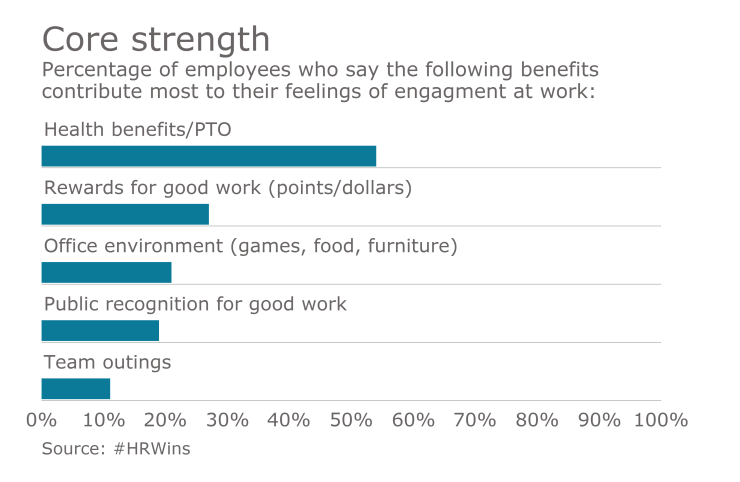Employee satisfaction doesn’t necessarily equate to happiness.
Talent engagement is more than “keeping people happy.” It is a set of managerial and leadership activities critical for building and maintaining a strong team while keeping talent costs reasonable.
“It’s not just about satisfaction; [that] doesn’t raise the bar high enough,” said New York Times bestselling author Kevin Kruse. “I blame Silicon Valley for this. [Happiness] doesn’t guarantee that people are exhibiting the right behaviors at work,” he said Thursday during EBN’s Benefit Forum and Expo in Nashville.
True engagement, he noted, is an emotional commitment to the organization’s goals. But why should employers care?

Engagement releases discretionary efforts across a variety of industries — sales, services and manufacturing, for example — that will inspire employees to go the extra mile.
For example, he said, “your call center representative will be just as engaged at 4:55 p.m. after thousands of calls as they were earlier that morning.”
And, Kruse noted, that engagement is being filtered through your organization’s managers and leaders.
He pointed to Gallup research:
· 61% of respondents showed engagement with managers who focused on strengths.
· 45% of respondents showed engagement with managers who focused on weaknesses.
· 2% of respondents showed engagement with managers who provided no feedback.
“Anyone with a retention problem needs to realize it’s an engagement problem at its root,” he said.
To best engage with employees, Kruse said it takes communicating growth, recognition and trust.
Sit down over coffee, he suggested, and have a non-HR conversation on where the worker stands in the organization.
As far as recognizing employees, your thanks will be valued based on the time invested in it.
“You’d be amazed at how far a handwritten note will go,” he said.
See also:
The consequences of disengagement
Disengagement doesn’t only affect the employer’s bottom line; it affects employees as well, Kruse said.
For example, disengaged employees have a 50% increased risk for heart attack or stroke. “That’s the same risks as smoking cigarettes,” he said.
There is also the spillover effects that disengagement can have outside the office. “Emotions at work spill into our personal lives and cross over to those around us,” Kruse said.
He advises managers to remain vigilant. “Laughing employees don’t always equate to engaged employees.”





